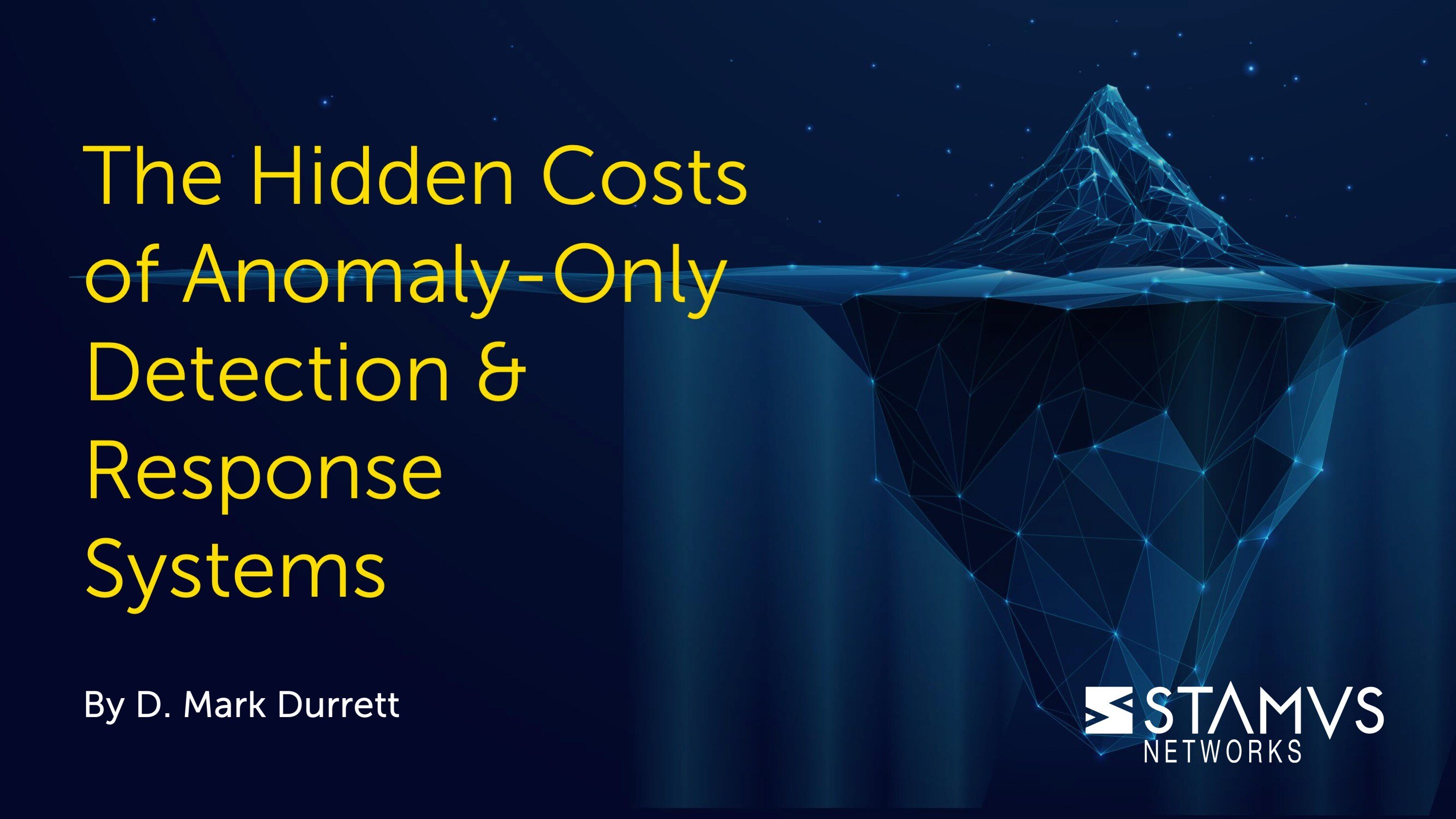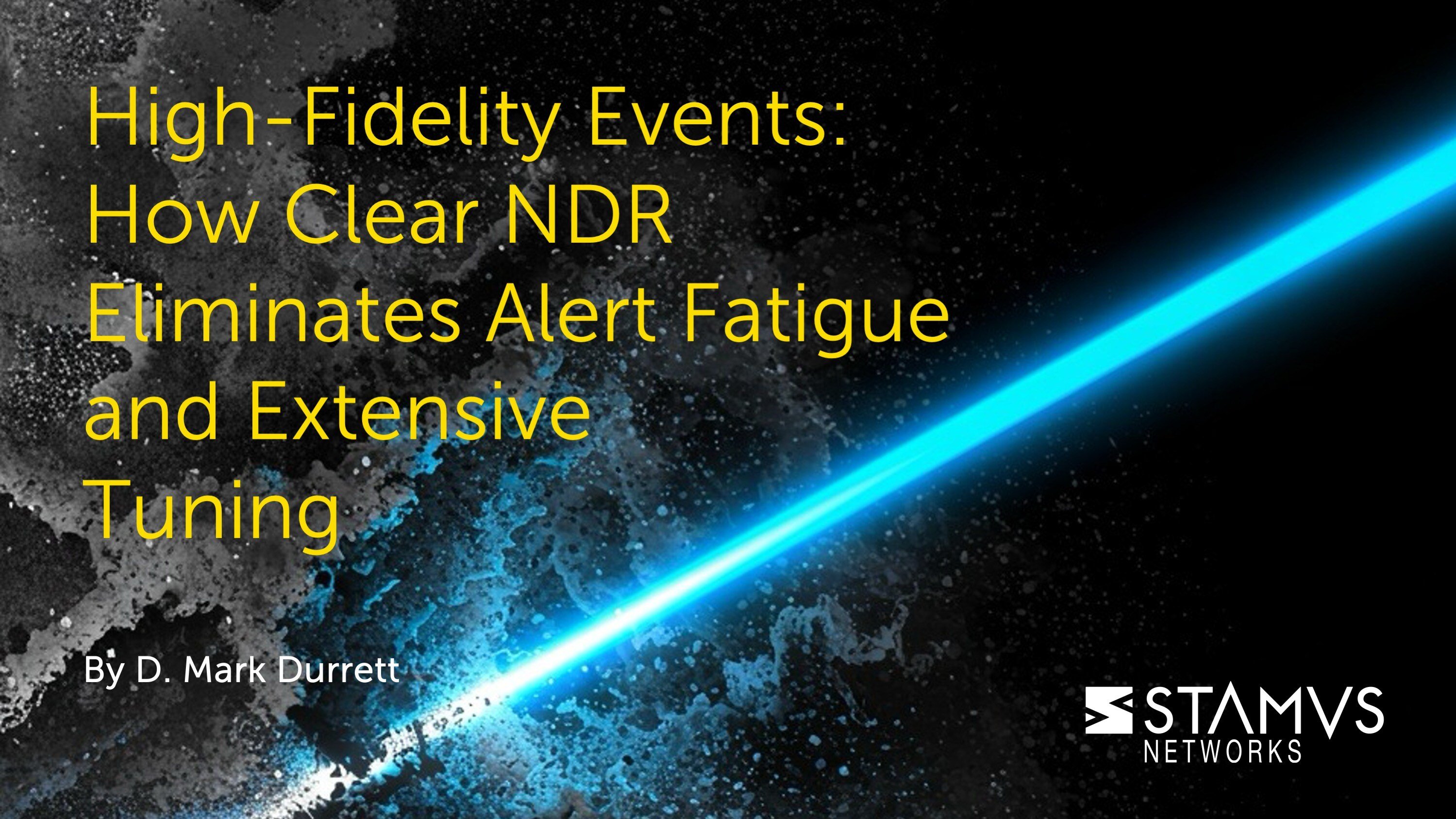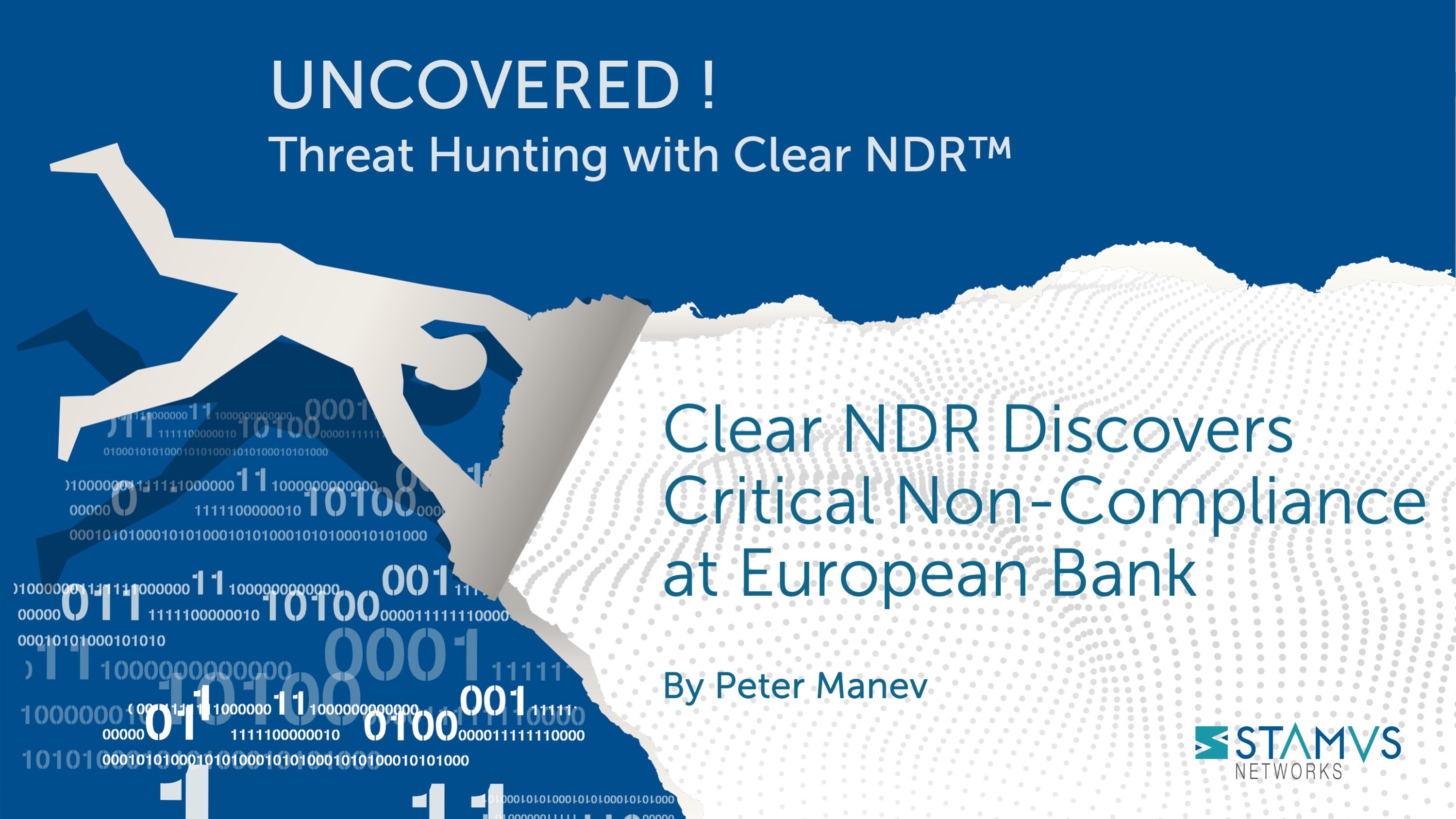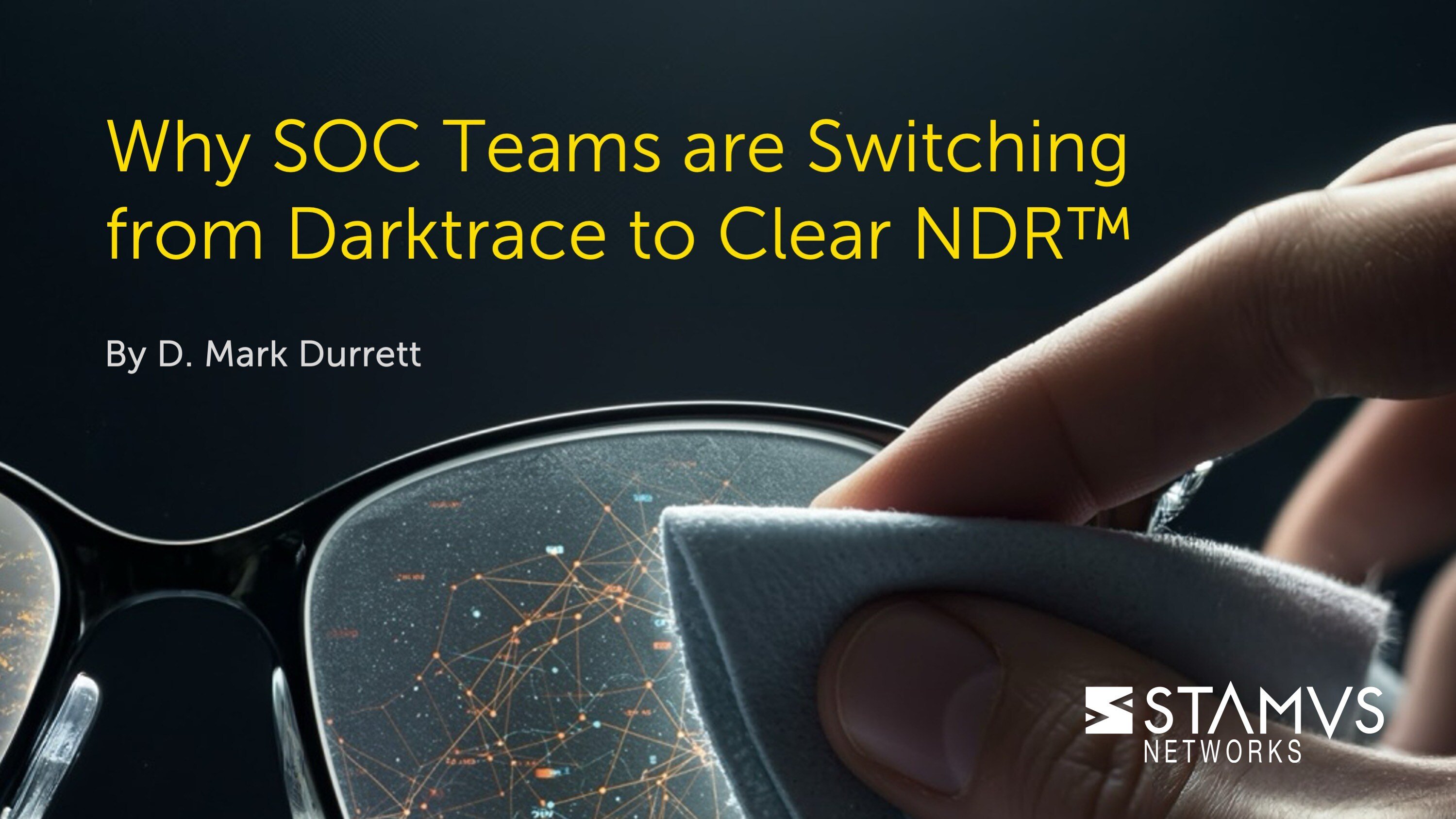In recent years, AI-based anomaly detection has become a cornerstone of network security marketing. Vendors tout their machine learning algorithms and artificial intelligence as revolutionary approaches that can automatically detect any threat by identifying behavior that deviates from the norm.
While behavioral anomaly detection certainly has its place in a comprehensive security strategy, organizations relying primarily or exclusively on anomaly-based NDR solutions are discovering significant hidden costs and limitations that impact both their security posture and their bottom line.
The Allure of Anomaly Detection
It's easy to understand why anomaly detection has captured the imagination of security teams. The promise is compelling: deploy a solution that learns what's "normal" for your network, then automatically flags anything unusual as potentially malicious. In theory, this approach can catch novel threats that systems based on other detection mechanisms might miss.
This promise is particularly attractive given today's cybersecurity challenges:
- Evolving threat landscape with zero-day exploits
- Sophisticated adversaries using custom malware
- Security talent shortages across the industry
- Growing network complexity and visibility challenges
However, as organizations gain operational experience with anomaly-only detection systems, they're discovering that reality falls short of the marketing promise—often at considerable cost.
The Training Period Tax
The first hidden cost becomes apparent immediately after deployment: anomaly detection systems require extensive baseline periods before becoming effective.
Most anomaly-based NDR solutions need anywhere from 2-8 weeks to establish their understanding of "normal" network behavior. During this training period, the solution provides limited security value while consuming both infrastructure resources and administrative attention.
This training period tax has several components:
1. Extended Vulnerability Window
During the baseline period, the anomaly detection system is essentially learning rather than protecting. This creates an extended window of vulnerability where new threats may go undetected. Organizations often don't fully account for this gap in protection when planning their security strategy.
2. Administrative Overhead
Tuning an anomaly detection system during its baseline period requires significant administrative attention. Security teams must carefully review the system's learning process, provide feedback on false detections, and ensure it's properly categorizing network behaviors.
3. Delayed ROI
While paying full price from day one, organizations receive diminished value during the training period. This delayed ROI isn't typically factored into TCO calculations during the procurement process.
Alert Quality Issues
Once past the training period, organizations face the next hidden cost: managing alert quality. Anomaly-based systems face fundamental challenges in distinguishing between benign anomalies and genuine threats.
1. Alert Storms During Network Changes
Networks aren't static—they evolve constantly. Every time an organization deploys new applications, updates systems, or changes network configurations, anomaly-based systems tend to generate alert storms. Each change creates a new "abnormal" pattern that triggers detection.
2. The False Positive Economy
The real-world impact of these alert quality issues creates what we might call a "false positive economy"—an ongoing operational tax that drains security team resources and effectiveness:
- Analyst Fatigue: Security analysts become desensitized to alerts after investigating numerous false positives
- Resource Diversion: Valuable analyst time is spent investigating benign anomalies rather than actual threats
- Trust Erosion: Over time, teams may begin to distrust the system, potentially ignoring genuine alerts
- Continuous Tuning Requirement: Maintaining acceptable alert quality requires ongoing administrative attention
3. The Paradox of Sensitivity
Anomaly detection systems force organizations into a difficult trade-off between sensitivity and usability. Increase sensitivity to catch more potential threats, and you drown in false positives. Decrease sensitivity to reduce false positives, and you risk missing actual attacks.
The Explanation Deficit
Perhaps the most significant hidden cost of anomaly-only detection systems is what we might call the "explanation deficit"—the lack of clear evidence and context that accompanies alerts.
When an anomaly-based system flags activity as suspicious, it typically provides limited explanation beyond "this behavior deviates from the baseline." This explanation deficit creates several downstream costs:
1. Extended Investigation Times
Without clear explanations of why an alert triggered, security analysts must conduct extensive investigations to determine:
- What exactly triggered the alert
- Whether the activity is genuinely malicious
- What systems and data might be affected
- What actions should be taken in response
These investigations consume valuable analyst time and extend response times.
2. Expertise Requirements
Interpreting anomaly-based alerts often requires deep expertise in both security and the specific anomaly detection system. This expertise requirement:
- Limits which team members can effectively respond to alerts
- Creates dependency on specific personnel
- Increases training costs for new team members
- Makes 24/7 coverage more challenging
3. Documentation and Compliance Challenges
The explanation deficit creates particular challenges for organizations with strict compliance requirements. Security teams often struggle to:
- Produce clear documentation of security incidents
- Demonstrate appropriate response actions to auditors
- Show evidence chains for security events
- Justify remediation decisions to stakeholders
The Integration Tax
Another hidden cost emerges when organizations attempt to integrate anomaly-only detection systems into their broader security ecosystem.
1. Context Acquisition Challenges
Because anomaly-based alerts often lack context, security teams must manually correlate them with data from other systems, including:
- Endpoint detection and response (EDR) tools
- Security information and event management (SIEM) systems
- Threat intelligence platforms
- Identity and access management solutions
This manual correlation creates ongoing operational costs.
2. Automation Limitations
The limited context provided by anomaly-based alerts also creates challenges for security automation:
- SOAR playbooks struggle with ambiguous alerts
- Automated responses risk acting on false positives
- Confidence scoring is difficult without clear evidence
3. Data Transfer Inefficiencies
Many anomaly-based systems detect potential issues but provide minimal details for export to other systems. This forces organizations to:
- Maintain duplicate data across systems
- Create custom integration workflows
- Develop manual processes to enrich alerts
Case Study: A retail organization calculated that their anomaly-based NDR solution required an additional 15 hours of integration work per week compared to detection systems that provided richer context and evidence.
The Multi-Layered Alternative
Given these hidden costs, organizations are increasingly recognizing that anomaly detection works best as one component of a multi-layered detection strategy. This approach combines:
1. Signature and Indicator-Based Detection
- Immediately effective upon deployment with no training period
- Provides clear explanations of what triggered each alert
- Offers high confidence for known threat patterns
- Delivers immediate time-to-value
2. Heuristic and Algorithmic Detection
- Uses defined algorithms to identify specific attack patterns
- Provides transparent detection logic
- Balances flexibility with explainability
- Targets specific techniques like command-and-control traffic
3. Targeted Anomaly Detection
- Applied selectively to specific network segments or behaviors
- Complements rather than replaces other detection methods
- Used where it provides the most value with minimal noise
4. Custom Detection Capabilities
- Allows security teams to create algorithms and rules for their specific environment
- Enables integration of internal threat intelligence
- Provides flexibility to address unique security requirements
- Empowers security teams rather than limiting them
Calculating the True TCO
When evaluating NDR solutions, organizations should consider these hidden costs alongside the obvious licensing and infrastructure expenses. A comprehensive TCO model should include:
|
Cost Category |
Factors to Consider |
|
Deployment Costs |
|
|
Training Period Costs |
|
|
Operational Costs |
|
|
Expertise Costs |
|
|
Opportunity Costs |
|
Conclusion: Finding the Right Balance
Anomaly detection remains a valuable component of network security when applied appropriately. However, organizations should approach vendors' claims with healthy skepticism, particularly those suggesting that anomaly detection alone is sufficient.
The most effective NDR solutions today provide:
- Multi-layered detection that combines signatures, algorithms, heuristics, and targeted anomaly detection
- Immediate value from day one, without extended training periods
- Clear explanations with every alert, including supporting evidence
- Integration capabilities that enrich your existing security ecosystem
- Customization options that empower your security team
By understanding the hidden costs of anomaly-only detection systems, security leaders can make more informed decisions about their NDR strategy—potentially saving millions in direct and indirect costs while improving their security posture.
About Stamus Networks: Stamus Networks offers Clear NDR, a multi-layered network detection and response solution that provides immediate value, transparent detections, and rich supporting evidence.
Want to see if Clear NDR is right for your security team? Request a demo at https://www.stamus-networks.com/demo or request custom pricing using our quote generator at https://www.stamus-networks.com/pricing-quote-generator







